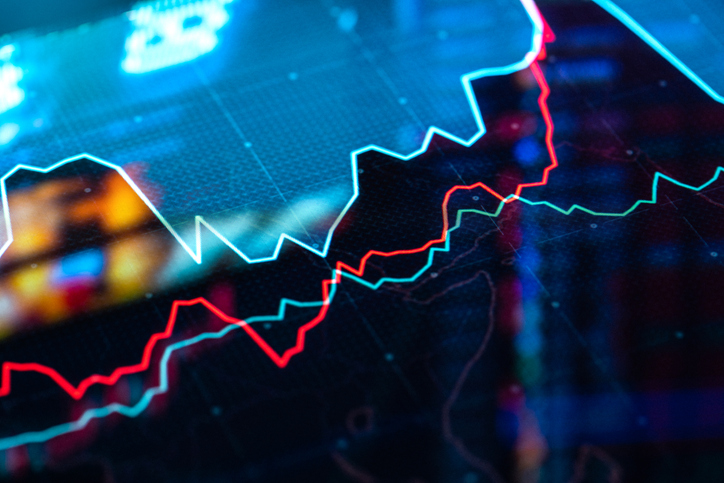The Best Vanguard ETFs to Buy
The best Vanguard ETFs all feature rock-bottom fees, large asset bases and long trading histories. Here are a few of our favorites.


Vanguard is the No. 2 asset manager in the world. The best Vanguard ETFs are among the largest and most respected investment vehicles on Wall Street.
With more than $10 trillion in assets under management, the revolutionary firm trails only BlackRock and by a modest margin.
Vanguard founder John C. Bogle is credited with popularizing low-cost, passive funds, and the best Vanguard ETFs are generally index funds that stick to a fixed list of components rather than engage in costly or complex strategies.
From just $107.88 $24.99 for Kiplinger Personal Finance
Become a smarter, better informed investor. Subscribe from just $107.88 $24.99, plus get up to 4 Special Issues

Sign up for Kiplinger’s Free Newsletters
Profit and prosper with the best of expert advice on investing, taxes, retirement, personal finance and more - straight to your e-mail.
Profit and prosper with the best of expert advice - straight to your e-mail.
The funds aren’t flashy, and a consistent and predictable approach might bore some investors, traders and speculators.
But it's hard to argue with the long-term outperformance of the low-cost, index-fund-based strategy.
What makes for the best Vanguard ETFs?
A long-term, hands-off approach: Many exchange-traded funds claim to provide outperformance by overlaying complex screening methods onto the stock market and changing out holdings based on the latest info.
Most research shows this "active management" approach is ineffective, however. According to data from S&P Dow Jones Indices (PDF), the majority of actively managed funds involving large-cap stocks have underperformed the S&P 500 Index on an annual basis going back to 2010.
Minimize fees to maximize profits: The challenge with active funds is simple. Even if you do get a small amount of outperformance, the related expenses — tax inefficiency and higher brokerage fees, for example — erode those profits.
Investors should consider the opportunity cost higher fees create. Every penny you pay in fees reduces current profits, and it erases cash that could be invested to grow over time.
The best Vanguard ETFs put more of your cash to work for you instead of your overpriced asset manager.
Don't forget DRIP: A dividend re-investment program, or DRIP, re-invests profits from your investments rather than having it sit idle in your account. The best Vanguard ETFs offer a no-fee, no-commission re-investment program that allows you to reinvest your distributions and supercharge your returns over time.
The best Vanguard ETFs to buy now
The Vanguard funds included here all feature rock-bottom fees, large asset bases and long trading histories.
Data is as of September 9.
ETF | Expense Ratio | Assets Under Management | Inception Date |
Vanguard S&P 500 ETF (VOO) | 0.03% | $734.3 billion | September 7, 2010 |
Vanguard Total Stock Market ETF (VTI) | 0.03% | $527.5 billion | May 24, 2001 |
Vanguard High Dividend Yield Index ETF (VYM) | 0.06% | $64.4 billion | November 10, 2006 |
Vanguard Information Technology ETF (VGT) | 0.09% | $100.5 billion | January 26, 2004 |
Vanguard Total International Stock ETF (VXUS) | 0.05% | $101.9 billion | January 26, 2011 |
Vanguard S&P 500 ETF
- Assets under management: $734.3 billion
- Expense ratio: 0.03%, or $3 per year for every $10,000 invested
The SPDR S&P 500 ETF Trust (SPY) is the oldest S&P 500 index fund out there, but the Vanguard S&P 500 ETF (VOO) recently surpassed it as the largest ETF as measured by assets. VOO remains the go-to option for most long-term investors, thanks to its low-cost structure and its exposure to the biggest names on Wall Street.
SPY charges 0.09% annually vs just 0.03% for VOO. Both are passively managed funds tied to the S&P 500 Index of the largest U.S. corporations.
There's no reason for most small-time investors to pay more for exposure to the exact same holdings. That list is led by must-own names such as Microsoft (MSFT), Nvidia (NVDA) and Apple (AAPL).
If you want to play the U.S. stock market through the years to come and do it efficiently, this is one of the best Vanguard ETFs to buy right now.
Vanguard Total Stock Market ETF
- Assets under management: $527.5 billion
- Expense ratio: 0.03%
Nearly as large but just as cheap, the Vanguard Total Stock Market ETF (VTI) is a one-stop shop for investors who want exposure to the whole U.S. stock market in a single vehicle. More than 3,500 different stocks make up this fund, representing all sectors up and down the market-cap scale.
The Vanguard Total Stock Market ETF doesn't treat every component equally, however. It's weighted heavily toward the largest stocks, so no small start-up is going to sink your portfolio.
It's the largest ETF by assets outside the massive S&P 500 index funds such as VOO. A well-established, more diversified option for buy-and-hold investors, VTI is one of the best Vanguard ETFs to buy right now.
Vanguard High Dividend Yield Index ETF
- Assets under management: $64.4 billion
- Expense ratio: 0.06%
Slightly smaller than VTI but still with tens of billions of dollars under management, the Vanguard High Dividend Yield Index ETF (VYM) is one of the best Vanguard funds to buy for investors looking to reduce their risk profile and tap into long-term income potential.
VYM focuses on stocks that pay above-average dividends, with a total yield of about 2.5% right now that's about two times the dividend yield of the S&P 500.
Apart from the regular income, dividend investment strategies highlight companies capable of consistent profit and payout growth. These businesses generate ample cash flow, often based on operational excellence.
VYM is well-diversified, with about 580 total holdings. But it’s biased toward the financial sector, with about a quarter of assets in banks and insurers.
Top holdings include chipmaker Broadcom (AVGO), megabank JPMorganChase (JPM) and energy icon ExxonMobil (XOM). These blue-chip names are good ballast for one of the best Vanguard ETFs.
Vanguard Information Technology ETF
- Assets under management: $100.5 billion
- Expense ratio: 0.09%
The flip side of low-risk dividend investing is speculating in high-growth tech stocks, with an emphasis on plowing cash into future opportunities rather than returning profits to shareholders.
That's what the Vanguard Information Technology ETF (VGT) has to offer: Tech exposure to the exclusion of all others.
VGT's portfolio is composed of roughly 320 different stocks in the sector, ranging from the big names you know and love, such as Microsoft and Apple, as well as Nvidia, plus smaller hardware manufacturers and software firms.
If you take a long view of the stock market, it's difficult to imagine tech stocks won't continue to be the biggest and most successful companies. Their business models are light on raw materials and employees, and they're satisfying what seems an ever-expanding appetite for disruption.
If you're bullish on the high-tech future of AI, cloud computing and similar processes, VGT is one of the best Vanguard ETFs to buy now.
Vanguard Total International Stock ETF
- Assets under management: $101.9 billion
- Expense ratio: $0.05%
Each of the four funds we've discussed so far slices up the U.S. stock market in different but efficient ways.
Businesses beyond America's borders have a lot to offer, too. That's become particularly clear so far in 2025, with Asian and European stocks outperforming U.S. big tech and blue chip stocks.
The Vanguard Total International Stock ETF (VXUS) gets you that overseas exposure. VXUS is an "ex-U.S." offering designed to exclude companies in the United States and to ensure holdings don't overlap with any domestic stock ETFs.
A massive portfolio of more than 8,600 stocks includes plenty of familiar names, such as Taiwan Semiconductor (TSM), China-based Tencent Holdings (TCEHY), Germany-based SAP (SAP) and Netherlands-based ASML Holding (ASML).
Big international businesses such as these often provide just as much upside as U.S. names. Broadening your exposure via these overseas stocks can help smooth out volatility for you and your portfolio.
VXUS is one of the best Vanguard ETFs to buy because it accomplishes those worthy objectives.
Related content
- Kip ETF 20: The Best Cheap ETFs You Can Buy
- Best SPDR ETFs to Buy and Hold
- 5 Best Fidelity Mutual Funds to Buy Now
Profit and prosper with the best of Kiplinger's advice on investing, taxes, retirement, personal finance and much more. Delivered daily. Enter your email in the box and click Sign Me Up.

Jeff Reeves writes about equity markets and exchange-traded funds for Kiplinger. A veteran journalist with extensive capital markets experience, Jeff has written about Wall Street and investing since 2008. His work has appeared in numerous respected finance outlets, including CNBC, the Fox Business Network, the Wall Street Journal digital network, USA Today and CNN Money.
-
 Time Is Running Out to Make the Best Tax Moves for 2025
Time Is Running Out to Make the Best Tax Moves for 2025Don't wait until January — investors, including those with a high net worth, can snag big tax savings for 2025 (and 2026) with these strategies.
-
 4 Smart Ways Retirees Can Give More to Charity
4 Smart Ways Retirees Can Give More to CharityFor retirees, tax efficiency and charitable giving should go hand in hand. After all, why not maximize your gifts and minimize the amount that goes to the IRS?
-
 If You Do One Boring Task Before Year-End, Make It This One
If You Do One Boring Task Before Year-End, Make It This OneWho wants to check insurance policies when there's fun to be had? Still, making sure everything is up to date (coverage and deductibles) can save you a ton.
-
 Time Is Running Out to Make the Best Moves to Save on Your 2025 Taxes
Time Is Running Out to Make the Best Moves to Save on Your 2025 TaxesDon't wait until January — investors, including those with a high net worth, can snag big tax savings for 2025 (and 2026) with these strategies.
-
 4 Smart Ways Retirees Can Give More to Charity, From a Financial Adviser
4 Smart Ways Retirees Can Give More to Charity, From a Financial AdviserFor retirees, tax efficiency and charitable giving should go hand in hand. After all, why not maximize your gifts and minimize the amount that goes to the IRS?
-
 I'm an Insurance Pro: If You Do One Boring Task Before the End of the Year, Make It This One (It Could Save You Thousands)
I'm an Insurance Pro: If You Do One Boring Task Before the End of the Year, Make It This One (It Could Save You Thousands)Who wants to check insurance policies when there's fun to be had? Still, making sure everything is up to date (coverage and deductibles) can save you a ton.
-
 Small Caps Hit a New High on Rate-Cut Hope: Stock Market Today
Small Caps Hit a New High on Rate-Cut Hope: Stock Market TodayOdds for a December rate cut remain high after the latest batch of jobs data, which helped the Russell 2000 outperform today.
-
 What Investors May Face in the New Year: Interview
What Investors May Face in the New Year: InterviewKeith Lerner, the chief market strategist and chief investment officer for Truist Wealth, speaks with Kiplinger.
-
 3 Year-End Tax Strategies for Retirees With $2 Million to $10 Million
3 Year-End Tax Strategies for Retirees With $2 Million to $10 MillionTo avoid the OBBB messing up your whole tax strategy, get your Roth conversions and charitable bunching done by year's end.
-
 'Politics' Is a Dirty Word for Some Financial Advisers: 3 Reasons This Financial Planner Vehemently Disagrees
'Politics' Is a Dirty Word for Some Financial Advisers: 3 Reasons This Financial Planner Vehemently DisagreesYour financial plan should be aligned with your values and your politics. If your adviser refuses to talk about them, it's time to go elsewhere.
-
 For a Move Abroad, Choosing a Fiduciary Financial Planner Who Sees Both Sides of the Border Is Critical
For a Move Abroad, Choosing a Fiduciary Financial Planner Who Sees Both Sides of the Border Is CriticalWorking with a cross-border financial planner is essential to integrate tax, estate and visa considerations and avoid costly, unexpected liabilities.